| 발표제목 : Evolution of the human machine interface towards automated driving | |
 |
Youngsam Lee, SW Eng., Interior Division, Continental Automotive 1995 - today At Continental, Instrumentation & Driver HMI [Substance] How efficient communication can be made between the vehicle and driver in the age of automated driving will be discussed in this presentation. Details are laid on how Continental will combine the priority- and comfort-oriented processing of the available information for the driver to increase the confidence in automated driving and ensure its acceptance. |
| 발표제목 : Sensor for auto driving: Advanced GNSS-based vehicle positioning | |
 |
Thomas Nigg, VP Product Marketing, Product Strategy Positioning, u-blox AG Thomas Nigg은 전자산업 분야에서 20년 이상, 그리고 GNSS 산업분야에서 15년 이상 근무했으며, 유블럭스 포지셔닝 제품의 Product Marketing and Product Management 팀 총괄책임 VP로 근무하고 있다. 그는 유블럭스 제품 방향 및 정책을 책임지고 있으며, 이전에는 유블럭스 글로벌 기술지원 팀을 이끌었다. [Substance] 요즘 차량용 내비게이션이 없는 차는 거의 없습니다. 운전자 보조 시스템을 통한 주행이나 자율 주행에 있어서, 복잡한 도심지에서도 수십 Cm정도의 정확도로 차량의 위치를 아는 것은 기본입니다. 최근의 GNSS 수신기는 장애물이 없는 시 외곽지역에서는 이러한 요구 사항을 어느 정도 만족시킵니다. 그러나 건물이 밀집되어 있는 시내에서는 요구하는 정확도에 미치지 못하는 경우가 많습니다. 위치 정확도와 그 위치 정보의 무결성을 높이는 데에는, 몇몇 기술들이 사용되고 있습니다. GPS, GLONASS, BeiDou, Galileo, QZSS 등의 위성을 동시에 이용하는 것은 도심에서 정확도를 높이는데 조금 도움이 됩니다. 그리고 센서를 이용한 DR 기술의 결합 역시 도움이 됩니다. 이러한 것은 분명 정확도 향상에 도움이 됩니다만, 운전자 보조 시스템을 통한 주행이나 자율주행에서 요구하는 정확도에는 여전히 미치지 못합니다. 전장용 GNSS수신기의 시장을 이끌어가고 있는 u-blox는 새롭고 진화된 GNSS기반 정밀 측위 기술을 개발하고 있으며 전장 산업 분야에서 요구하는 차선 구분 가능한 수준의 정확도를 가진 제품을 양산 적용에 합당한 가격으로 공급 가능합니다. |
| 발표제목 : Human Factors Challenges in Self-Driving Cars | |
 |
Dr. Joonwoo Son, Project Leader, Dept. of IT Convergence Research, DGIST Dr. Joonwoo Son is a senior research scientist in the DGIST HumanLab. He holds a B.S., an M.S. and Ph.D. from Pusan National University, South Korea. He has worked as a senior research engineer at Daewoo Precision Ind. Ltd. and SiemensVDO, and has been a visiting researcher at the Massachusetts Institute of Technology (MA, USA). Dr. Son's primary research interests are in the areas of self-driving cars, design guidelines for older drivers, driving workload assessment methodology, advanced human-vehicle interaction and eco-drive assistant technologies. [Substance] Self-driving car technology is promising for enhancing road safety and traffic efficiency. However, the shared authority issue between a human driver and self-driving car remains an open question until more human factors research and testing has conducted. Although some self-driving cars have already been tested on public roads, human drivers are still expected to have control responsibilities, particularly under NHTSA Levels 2 and 3 of automated driving. As long as a human driver is expected to control a self-driving car in the case of emergency, it is required to develop a safer method to transit a control authority between a self-driving car and a human driver. In this presentation, the human factors challenges for self-driving cars, i.e., shared authority concern, driver acceptance and training, will be discussed. A scalable human-in-the-loop simulation framework to evaluate driver and system performance for various automated vehicle concepts will also be introduced. |
| 발표제목 : Data fusion system & Vision ADAS solution | |
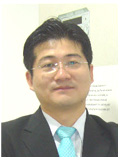 |
Tae Hyun Kim, Marketing Manager, Freescale Semiconductor Korea
2008~ Freescale marketing [Substance]
Regarding Data fusion FSL offers new architecture which support ISO 26262 and sensor data fusion.
Characteristic of FSL data fusion system are |
| 발표제목 : Automotive ICs and their role in enabling autonomous driving | |
 |
Thomas Muller, Product Manager Automotive, ams Mr. Muller began his semiconductor industry career in 1995 when he joined the MEMS Microsystems group at the Swiss Federal Institute of Technology (ETH Zur-ich). In 2000 he joined ams to take over a corporate research position focused on magneto sensor technology. From 2003 to 2008 he headed the sensor interface design in ams’ automotive business unit. Since 2008 he is the program manager for automotive full custom ICs (ASICs) at ams. Mr. Muller, holds a doctorate degree in Physics from ETH Zurich and several patents in microelectronic technology. Mr Muller is a citizen of Germany. [Substance] ams is a global leader in advanced and highly efficient analog sensor solutions. ams hight-performance sensor solutions and analog products fuel applications requiring extreme precision, dynamic range, sensitivity, and ultra-low power consumption. In the automotive area, ams provide a full value chain, including product definition, IC design, state-of-the-art manufacturing and test. To make automomous driving a reality, safety is one of the main care-abouts and collision avoidance systems for example become an indispensable requirement. LIDAR systems employ an invisible laser in the rear view mirror. The reflected light from obstacles such as cars or pedestrians in close proximity s used to measure the distance. If the distance is too small, the system initiates automatic braking. LIDAR systems are among the first active safety features that are coming into vloume production and ams is market leader in this segment. Environmental protection and sustainability is another area that is rapidly gaining in importance and topics that need be addressed include providing higher efficiency, electrification of conventional cars that are reinforced by 12V, 48V, micro/mild hybrids, PHEV, etc. The presentation will provide an overview of how semiconductors enable future applications and in particular the role that Automotive ICs play in enabling autonomous driving. |
| 발표제목 : Integrated ADAS system - The next step towards autonomous driving | |
Taehoon Ted Lee, FAE, Infineon Technologies
|
|
| 발표제목 : How to develop the software component for OEM-Supplier collaboration based on AUTOSAR 4.x and Functional architecture for autonomous driving | |
 |
Seungyueb Chae, AUTOSAR Solution Architect (Korea Office), KPIT Technologies 2014.04 ~현재 KPIT 본사 AUTOSAR solution Architect [Substance] 자동차의 자율주행, 고안전, 고편의, 연비향상 등을 위해서 OEM이 Vehicle level에서 기능을 고려해야 한다. 그리고 OEM은 OEM의 ECU에 Master 역할의 SW-C와 Supplier에 Slave역할의 SW-C를 직접 개발하면, OEM이 원하는 기능을 구현할 수 있다. 해외 OEM에서는 이미 관련된 개발 가이드라인을 만들어 RFQ로 Supplier에게 요구하고 있다. |
| 발표제목 : Enabling Multi-OS Automotive Embedded Systems | |
Ian Nam, Application Engineer Consultant, Mentor Graphics [Substance] 최근 자동차용 임베디드 장비가 점점 많은 디바이스들과 다양한 인터페이스(WIFI, BLUETOOTH, USB)를 통해 연결이 되며 많은 기능을 지원할 수 있도록 통합되고 있어 최소한의 비용으로 이러한 요구사항을 만족시키는 성능을 구현하고 보안이 확보된 제품을 빠른 시간 내에 개발하여 시장에 출시할 수 있는 솔루션에 대한 필요성이 커져 가고 있습니다. 멘토 임베디드 멀티코어 솔루션은 하나의 자동차용 임베디드 시스템을 대상으로 멀티 OS(IVI Linux, AUTOSAR, RTOS)가 함께 동작할 수 있는 환경을 제공하여 보다 효율적인 시스템 리소스 사용을 가능하게 하고 기존 소프트웨어의 재사용성을 높일 수 있는 동시에 통합에 따른 보안 문제를 해결할 수 있도록 가상화 솔루션을 제공하고 있습니다. |
|
| 발표제목 : Haptics for Automotive HMI | |
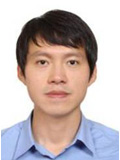 |
Hyun Woo Kim (Howard Kim), Field Application Engineer, EP/DLP Team, TI Korea (Before) Application Engineer for capacitive touch & Haptics, AIP Strategy Solution in TI Korea (Current) Field Application Engineer, EP/DLP Team in TI Korea [Substance] Generally a tactile feedback technology that takes advantage of the sense of touch by applying forces, vibrations, or motions to the user. Of these three feedbacks, Haptics refers to the sense of touch and is a technology that provides mechanical feedback through the use of vibrations to simulate specific events, surfaces or effects. |
| 발표제목 : Software architecture for integrating infotainment and ADAS systems | |
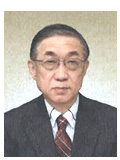 |
Yoshiki Chubachi, Automotive Business Development Manager, QNX Software Systems Yoshiki Chubachi is an automotive business development manager for QNX Software Systems, where he responsible for promoting the QNX CAR application platform throughout Japan. Yoshiki has deep experience developing in-car infotainment systems, including the world’s first AutoPC-based navigation product. Throughout the course of his career, he has managed the sales of automotive technologies, both in Japan and internationally; architected navigation systems for automotive OEMs; and developed hardware and software. He speaks often at Telematics events and industry seminars, with a focus on in-vehicle architectures and Telematics. His accomplishments include helping an infotainment software company based in Germany launch its infotainment business in japan. Yoshiki holds a Master’s degree in engineering from Tohoku University, as well as a doctorate degree from Shizuoka University, where he performed research on blue light-emitting elements on II-VI semiconductor crystal thin film. [Substance] In-car software systems continue to evolve toward autonomous driving. As the precursor to fully self-driving cars, ADAS systems are providing new functionalities such as lane departure warning, automatic parking, blind spot detection and more. Automakers are now facing challenges to integrate ADAS software components into traditional infotainment systems. This new market challenge calls for a very flexible platform for combining diverse technologies and allowing software components with different safety requirements to co-exist. In this session Yoshiki Chubachi will discuss software architecture that allows easy integration of today’s infotainment and more advanced features required tomorrow. |
| 발표제목 : Always connected | |
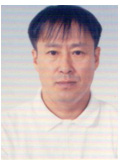 |
Jae Kyun Chang, IES, Interior division, Continental Automotive Head of IES Korea(2010-Currently) [Substance] Tomorrow's vehicle is always connected, user friendly, comfortable and intelligent. Information management is a key to realize Clean Power and Zero Accidents. Our products make the networked vehicle of the future more user-friendly, more comfortable, and more intelligent. At the same time, our solutions play a decisive role in making the aims of Clean Power and Zero Accidents a reality. We simplify the control and optimization of internal information channels within the vehicle by integrating components into overarching systems. By establishing intelligent networks, we are able to implement new functions and services - also for electric vehicles, for instance. Finally, our intuitively understandable, ergonomic control devices enable users to safely and conveniently deal with various items of information. Optimizing the management of the human-machine interface is important to us throughout. |
| 발표제목 : Eliminate the technology gap through innovation: Programmable solution for Automotive | |
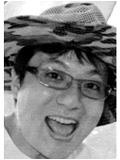 |
Ham Seokpil, Altera Dedicated Field Application Engineer, Uniquest Korea Altera Automotive FAE Uniquest Automotive TFT member [Substance] 과학에 의해 인류는 질병으로 인한 사망률을 낮추고 있다. 더불어 운전부주의에 의해 발생하는 교통상해도 과학으로 줄이려 노력하고 있다. 자동차의 ADAS, 인포테인먼트 분야는 운전부주의에 의한 교통사고율을 직간접적으로 낮춰 이로 인한 불필요한 사회적 비용을 줄여줄 수 있다. 사람의 주요 감각기관을 대체하는 여러 센서를 접목한 애플리케이션에서 사람의 뇌 역할을 하는 FPGA 등의 프로그래머블 솔루션이 빠르게 자리 잡아가고 있다. Self-driving car의 기반이 되는 ADAS, 인포테인먼트 등의 분야에서 어떻게 FPGA가 인간의 뇌와 신경망 같은 역할을 하는지에 대해 알아보며, 이를 응용한 애플리케이션은 어떻게 발전했는지, 그리고 어디로 나아가게 될지를 함께 보도록 한다. |
| 발표제목 : Car Radio Growing Against All Odds | |
 |
Lars Boysen, NXP Semiconductors [Substance] Lars Boysen is Product Marketing Manager for NXPs Car Radio ICs since 2013. Since 1994 he held several positions in the sensor, semiconductor and navigation hardware industry. |
| 발표제목 : Connected radio | |
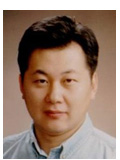 |
Ph.D. Changwon Park, Principal Research Engineer, IVI AVN Team, LG Electronics 2002 한국과학기술원 전산학 공학박사 [Substance] IVI Trend, Connected Radio 제품 소개, 제품에 탑재된 Connected App 소개, MirrorLink 소개, CarPlay 소개, Android Auto 소개, 향후 전망 |

